In the last article, we looked at what a retrograde planet is. We saw that, astronomically, it is an optical illusion resulting from our geocentric perspective and, astrologically, it is a time of review and reflection.
The purpose of this article is to tell a story, ultimately a developmental one, about the retrograde cycle to see if we can refine our understanding of its symbolic meaning. When we have a more refined understanding, our awareness can deepen and we can gain more insight into our experiences. The story we will tell in this article will need to be tested over time, but it holds promise for insight to be gleaned.
Before we can tell the story, we need to find some anchor points to work with. We can find those by parsing out the structural details of the cycle itself, so we’ll start there. Then, once we’ve identified the details, we’ll move on to tell the story.
Let’s dive in.
Significant Points and Degrees of the Retrograde Cycle
Significant Points
We saw in the last article that there are three legs to the retrograde cycle. These include two shadow periods and a retrograde period sandwiched between them. Using this basic structure, we can identify five significant points in the retrograde cycle and three significant degrees. We’ll start with the significant points. They are the:
Reconnaissance point
Retrograde point
Midpoint
Direct point
Integration point
The Reconnaissance Point
The reconnaissance point (#1) is the point where the planet first enters the retrograde territory, initiating the first shadow, or reconnaissance, period and the first leg of the retrograde cycle. During this leg of the cycle, we take our first survey of the retrograde territory, getting a sense of what lay ahead, even if only subliminally.
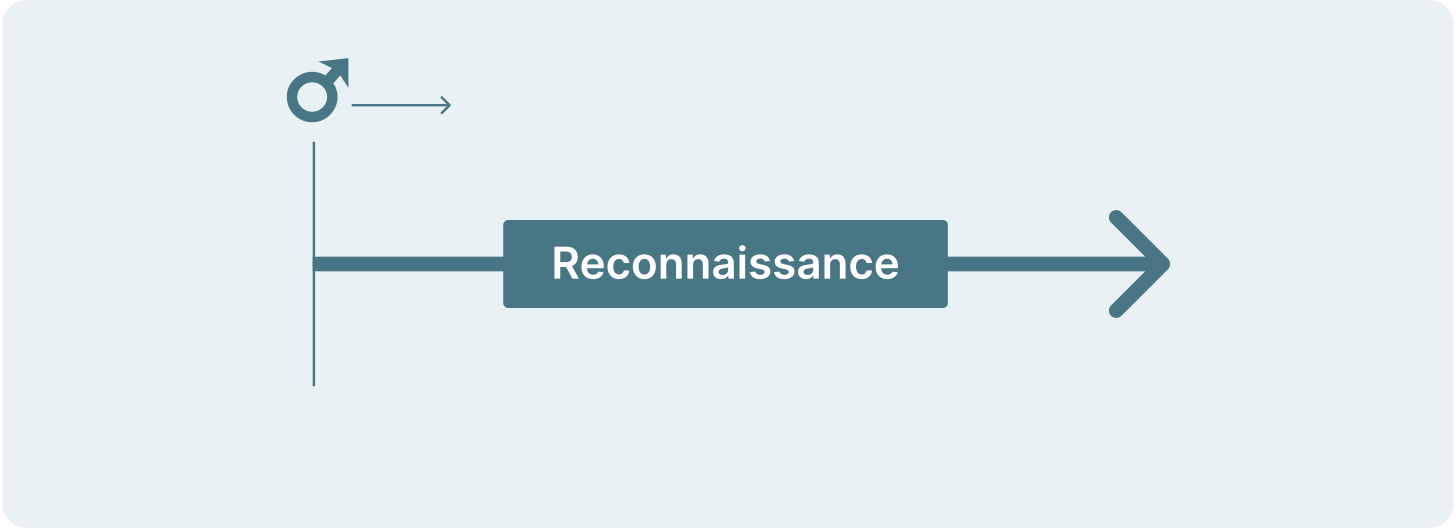
The Retrograde Point
The retrograde point (#2) marks the spot where the planet turns retrograde, initiating the retrograde period of the cycle. This part of the cycle is what we typically think of when we talk about a retrograde planet. When the planet enters this leg of the cycle, we enter into a time of review and reflection.
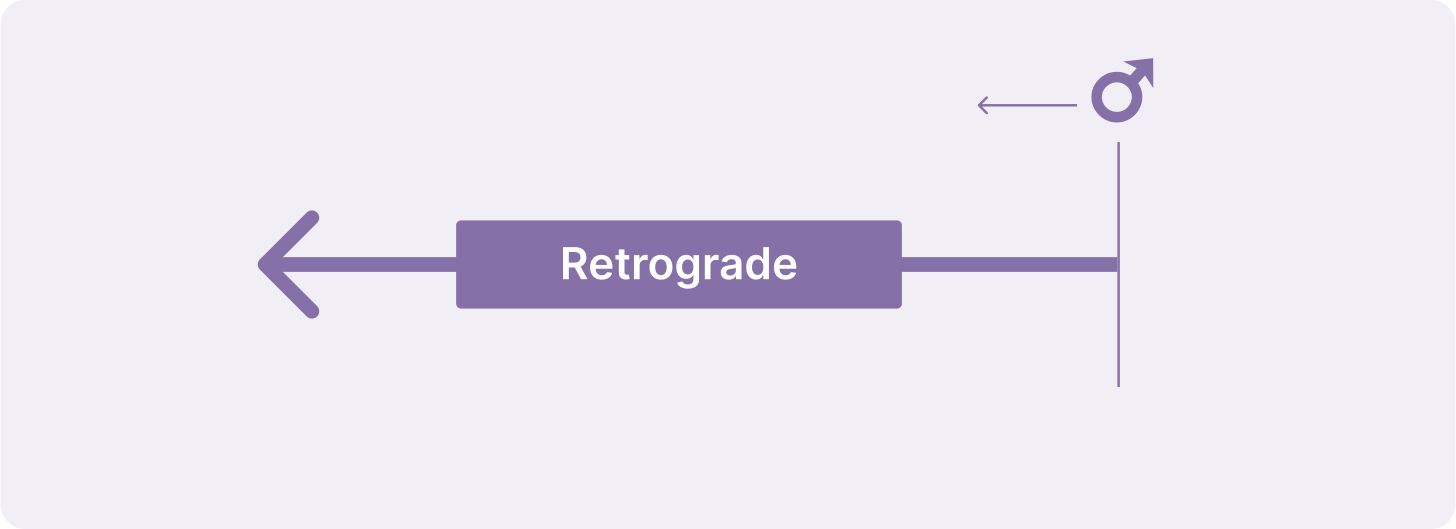
The Midpoint
The midpoint (#3) occurs when the planet opposes or conjuncts the Sun. This specific event happens only once during the retrograde cycle, specifically during the retrograde period. But, over the course of the cycle, the planet crosses over the degree marked by this point three times, once during each leg of the cycle, bisecting each leg into two halves.
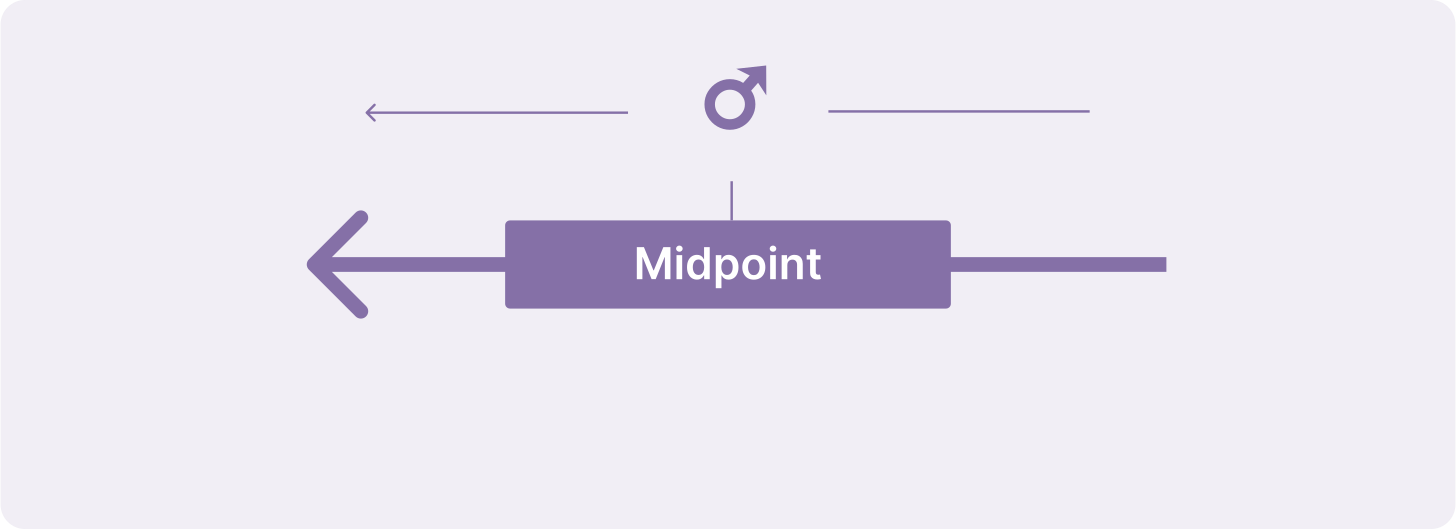
The Direct Point
The direct point (#4) is the point where the planet turns direct, ending the retrograde cycle and initiating the second shadow, or integration, period. During this part of the cycle, we integrate what we experienced in the first two legs of the cycle.
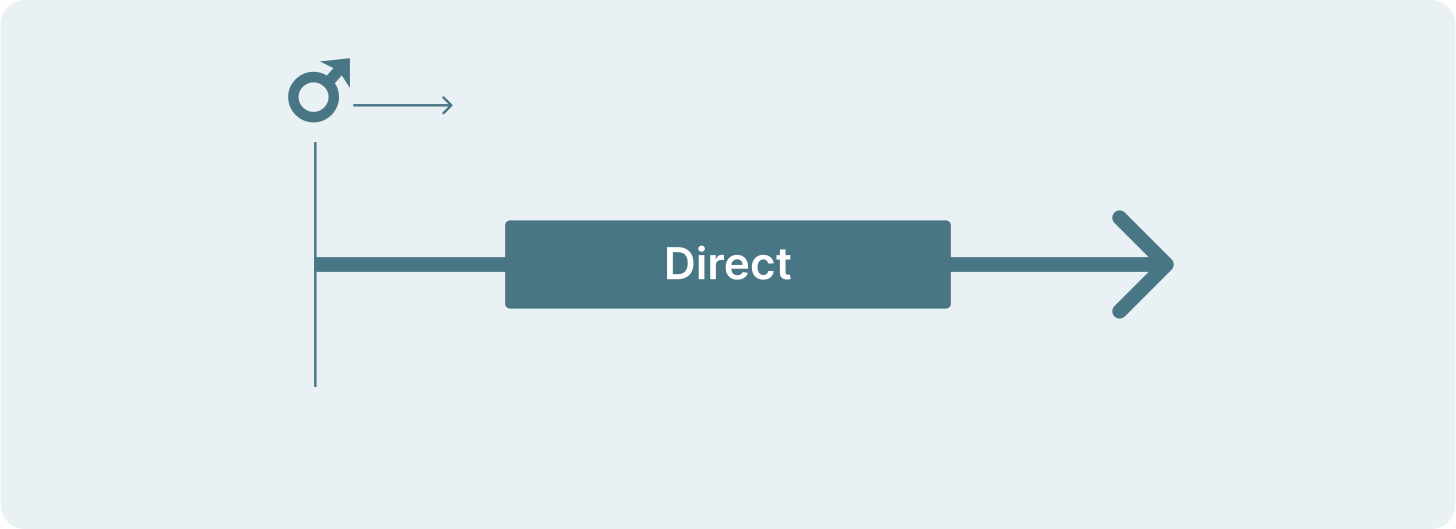
The Integration Point
Finally, the integration point (#5) is the point that marks the end of the integration period. It also marks the end of the retrograde cycle as a whole and the beginning of the planet’s trek through the new stretch of territory from which it initially turned back.
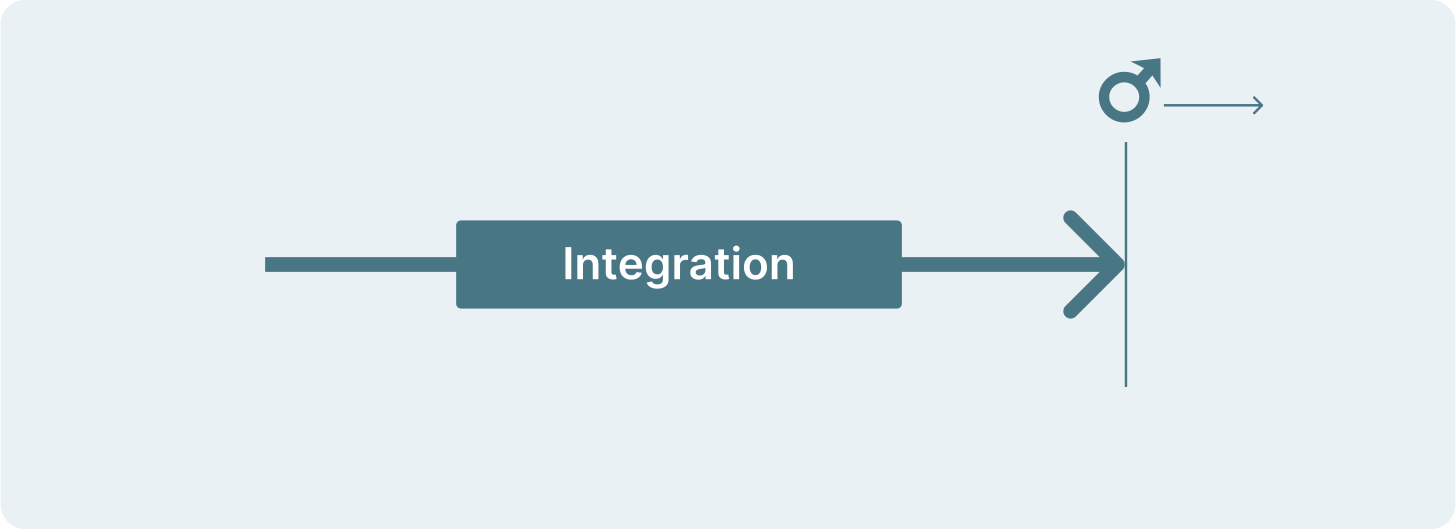
Significant Degrees
Each significant point occurs at a specific spot, or degree, in the zodiac. Because the retrograde cycle consists of three back and forth transits over the same territory, more than one point occurs at a given degree. For example, looking at the diagrams above, we see that the reconnaissance point (#1) occurs at the same spot as the direct point (#4). We also see that the retrograde point (#2) occurs at the same spot as the integration point (#5). Although not made explicit in the diagrams above, the midpoint degree (#3) is also repeated three times, once during each leg. This repetition can be seen in diagram #6 below.
Thus, while there are five significant points, there are only three significant spots, or degrees. Weighting the primary events in the cycle, we can call these degrees the:
Retrograde degree
Direct degree
Midpoint degree
The retrograde and direct degrees define the boundaries of the cycle, with the retrograde degree marking the later or future edge of the cycle and the direct degree marking the earlier or past edge of the cycle. The midpoint degree marks the middle of the territory.
The diagram below shows the five significant points and three significant degrees of the retrograde cycle:
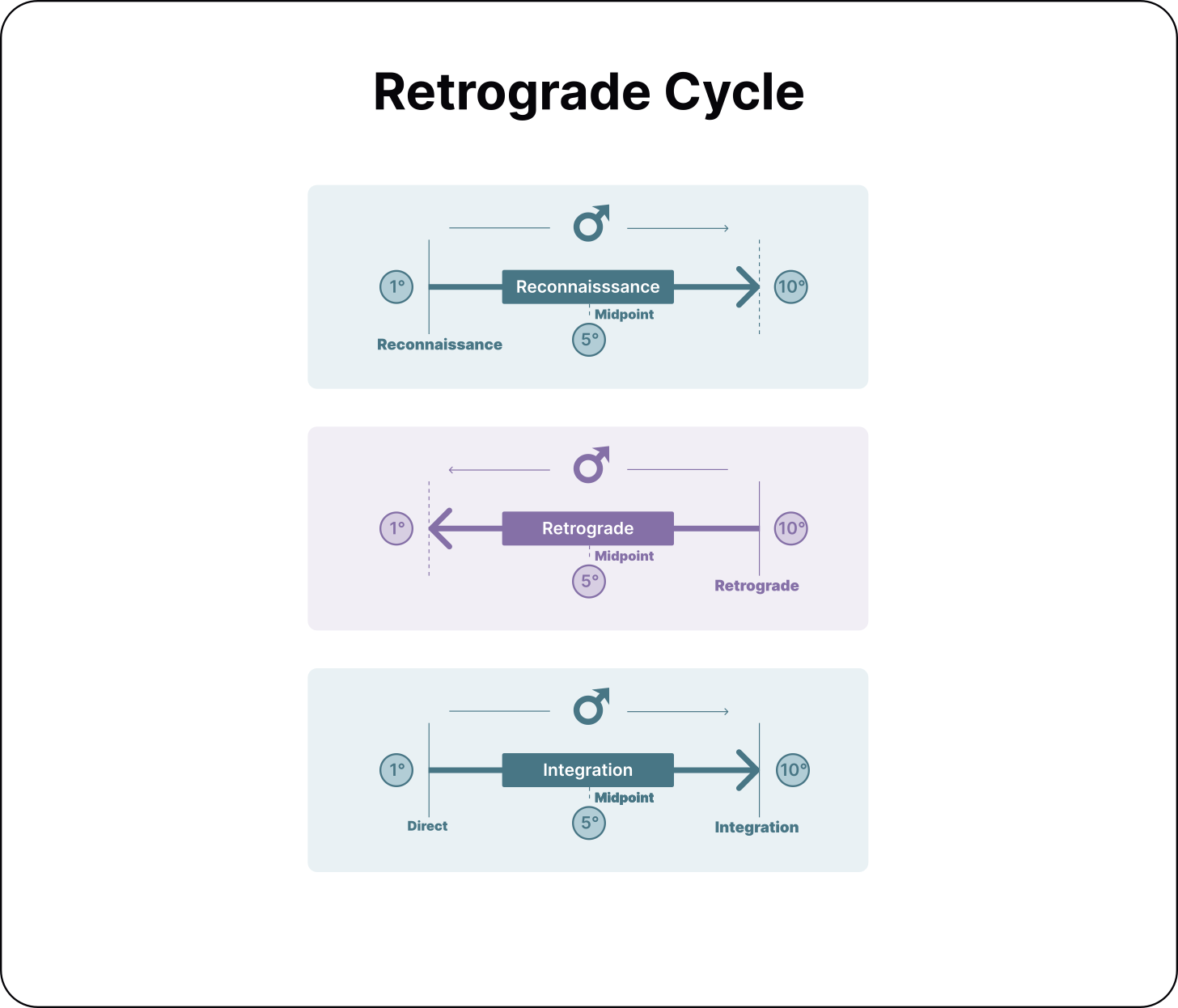
Constructing a Story
Asking Questions
Using the structural details above, we can ask questions about the retrograde cycle to probe its metaphorical meaning. I did this when feeling dissatisfied with my ability to connect experience with meaning regarding retrograde transits. The questions I asked were:
What prompts the planet to make an about face at the retrograde degree?
What prompts it to resume its forward direction at the direct degree?
What is the significance of the planet’s meeting with the Sun at the midpoint of the cycle?
In the next section, we’ll use the first two questions to help us construct a story about the retrograde cycle that takes us beyond the commonly accepted understanding. Once we’ve told that story, we’ll introduce a developmental concept to build on it. To set us up, though, we’ll start with the commonly accepted story.
Regarding the third question, I have not yet worked out the meaning of the Midpoint, but, after the stories are told, I will offer some ideas.
Telling the Retrograde Story
Two Important Caveats
Before diving in, there are two important caveats to consider.
First, by using the significant degrees to tell a story, I am not meaning to say that they are the only degrees that matter, just that they provide us with an outline we can use to build a story. Depending on one’s chart and the timing of inner or outer events one experiences, other degrees may prove to be more prominent for a given retrograde cycle. In such a case, I would expect the general outline constructed from the defining edges of the cycle to be the same, but the details different depending on the degrees activated in a given chart.
Second, as mentioned at the start of the article, the stories I tell, meaning the second two stories below, are experimental. Whether or not they are useful, generally (or specifically for a given retrograde or person), would need to be tested over time.
With all that said, here are three stories for the retrograde cycle.
Version One
The story I learned about the retrograde cycle is that when the planet turns retrograde, it enters a review period. During this review period, we find that we have to revisit and review inner and/or outer aspects of our lives to iron out details of some kind. This story helps because it invites us to contemplate our experiences and to ask within what we might learn from them. Considering the planet(s), sign(s), house(s), and aspects associated with the retrograde cycle can give us insight into the specific retrograde process we go through.
We can think of this story as explanatory in nature. When we look to the planets to help us understand why some kind of misalignment happened, we see that a planet is retrograde and that explains it. The details of planet, sign, etc, provide us with more explanatory detail.
However, this version does not answer the questions asked above. To do that, we need to go a little further.
Version Two
Using the significant points, we can add another layer to the story. Answering the first question above, we can say that, as we are going along our way, we reach a certain point that gives us pause. This point is the retrograde point. Reaching it, we realize on some level, likely subliminal, that we are not ready for this moment and/or for what we see ahead. Thus, we turn back.
Answering the second question above, we can say that, on some level, likely subliminal as above, at the same time that we realize we need to turn back, we also realize that there is something we need to go back for. That missing something is represented by the direct point. Perhaps, on some level, we took note of it when the planet first entered the retrograde territory at the reconnaissance point and so we intuitively know that’s what we need to go back for.
With these two pieces of information, at whatever level we register them, we enter into the retrograde period. As we travel back for what we need, we also give ourselves an opportunity to reflect, review, consider, etc. Reaching the direct point, we gather up what we need and push off with renewed strength, integrating what we have learned during the integration period and thus readying ourselves for the experiences to come in the new territory ahead.
Version two, like version one, provides us with an explanation for our experiences. The explanation this time is that there is something ahead that we are not ready for, and so there is something we need to go back for. Unlike with the first version, though, with these details we now have two tension points in the story. One tension point is the point of growth calling us forward. The other is the point of need calling us back. Sandwiched between the two is the retrograde territory, with the tension points creating the possibility for a more meaningful and purposeful understanding of our experience as we move through the space.
Version Three
For the final version of the story, we’ll draw on a developmental insight elucidated by Josette and Sambhava Luvmour in their book, Natural Learning Rhythms: Discovering How and When Your Child Learns.1 In their book, the Luvmour’s lay out a four-stage model of child development. Although recently I came across examples of them using different names for these stages, in their book they call them Body Being, Emotion Being, Will Being and Reasoning Being.2 Contained within each stage are smaller developmental steps, which they call phases.
Additionally, according to the Luvmours, as a child approaches a new stage or phase of development, they enter into a transition period that they call a hesitation.3 The hesitation is a moment in the developmental process when all of the child’s inner resources redirect from doing the work of the stage in which they have been developing to preparing for the new stage about to emerge.
Behaviorally, according to the Luvmours, this moment may manifest as regressive behavior. From their perspective, such regressive behavior is not a sign that something is wrong. Rather, it is a sign that things are progressing as they are meant to. When regressive behavior manifests, it is indicating that the child needs space and/or support to prepare for the new phase about to emerge.
When reflecting on the retrograde cycle, it strikes me that the developmental hesitation is an apt metaphor for it, with the emerging stage or phase of development represented by the far or future edge of the cycle and the developmental touchstone represented by the near or past edge. When the retrograding planet reaches the far edge, something in us recognizes the emerging developmental shift and so we enter into a preparatory hesitation.
Once we have touched back into the near edge representing the past developmental touchstone, whether that be comfort, rest, perspective, understanding, experience, a missing piece, etc, we turn back around. Experiences that arise for us along the way, such as bumps in our experiential road, can be thought of as signs indicating that we are preparing for an upcoming shift. They can also offer us insights into the specific developmental shift that is emerging.
To help us better understand our experiences, we can use the astrological symbolism of the cycle, and how it intersects with our chart, as a mirror. More specifically, we can consider the usual suspects of planet(s), sign(s), house(s), and aspects for insight. I would also include phase spaces. If a retrograding planet doesn’t make significant contact with our chart, we may notice that we don’t experience much.
As with the previous two versions of the story, this one provides us with an explanation. Where the first one reveals a need for a review and the second adds that the review is related to something ahead that we are not ready for, the third adds that the something ahead is an emerging developmental shift. Clarifying the something ahead, we see that the inward turn is less about what we are not ready for and more about a natural and essential part of a dynamic process. Just as we have to first drop down to jump up, so, to shift to a new stage or phase, we have to first drop inward to leap forward in our development.
A Point of Consideration
As I thought about this story, it struck me that repeating retrograde cycles might not always coincide with currently emerging stages of development, even if the retrograding planet contacts our chart during the cycle. Thus, another possibility might be that retrograde cycles surface aspects of past cycles of development that we were not able to successfully navigate and integrate.4
This telling of the story suggests that the cycle of creation has built into the process periodic reviews that allow us to heal and resolve what we were not able to do before, for any of the many reasons that may have happened. Thus, we can see the retrograde phenomenon as providing us with inbuilt cycles of support.
Before moving on to the last section where we’ll consider how to individualize the story to a specific retrograde cycle, let’s consider the midpoint.
The Midpoint Degree
At this point, I am not sure how to read the midpoint degree. But here are some ideas I’ve been thinking about.
Vitalization
Because the midpoint is determined by when a retrograde planet reaches either an opposition or conjunction with the Sun, a planet that symbolizes creative and expressive vitality, perhaps the midpoint represents a key moment of vitalization of our creative and expressive energies.
Touchstone
Repeating in the middle of each leg of the cycle, perhaps we can also say that it represents a touchstone for us during the retrograde cycle. Perhaps we can think of the repetition of the midpoint as like a musical note or poetic phrase that repeats for rhythmic and evocative effect to help us become more aware of an inner aspect of our experience.
Dynamic Tension and Harmonization
Another possibility has to do with the symbolism of the opposition that is relevant to retrograding superior planets, or planets that orbit the Sun further out from the Sun than the Earth does. These planets are Mars through Pluto.5 The opposition symbolizes dynamic tension between polarities and the ongoing effort to find balance between the two, thus allowing harmonization to occur.
Awareness
Given the involvement of the Sun in this opposition and its ability to shine light on whatever is there, perhaps for the superior planets the midpoint represents a moment of awareness. This awareness would be symbolized by the retrograde planet, whether it be of a positive or shadow aspect of it. In either case, our task would be to integrate what we become aware of.
Seed
Thinking about the conjunction to the Sun that inferior planets make during the retrograde cycle, or planets that orbit closer to the Sun than the Earth does (Mercury and Venus),6 perhaps for these planets the midpoint represents a time during which we become aware of a seed of light-filled identity that is meant to be planted in the new stage. This awareness of the seed becomes our touchstone, one that, perhaps, we become progressively more aware of as we move through the cycle.
Adding to this perspective, we can draw on the traditional astrology concept of cazimi. Cazimi occurs when a planet is tightly conjunct the Sun. According to The Astrology Dictionary, the word cazimi ultimately derives from a Greek word that means “in the heart”.7 Thus, when a planet is cazimi, it is “‘in the heart’ of the Sun.”8 If the conjunction also represents the seed, then we can speculate that, at the midpoint of the cycle, we become aware of not just any seed, but a heart seed imbued with solar vitality and inspiration.
Or perhaps there are other possibilities.
Final Piece for Consideration
Up until now, we have used the significant degrees of the retrograde cycle to define the borders of the cycle. With those borders defined, we then constructed a generic story for the retrograde cycle to gain a general understanding of it.
But, each degree of the zodiac also carries a symbolic meaning, and it so happens that early in the twentieth century, a couple of people, a psychic named Elsie Wheeler and an astrologer named Marc Edmund Jones, took the time to bring through what those meanings were. The set of symbols they brought forward are known as the Sabian symbols and are still used by astrologers today.9
Using these symbols, we can see if we can take the generic developmental story for the retrograde cycle and individualize it to a specific cycle. In the next article, we’ll test this idea using Jupiter’s current retrograde cycle in Taurus.
Looking Up Sabian Symbols
If you would like to get a jump start on interpreting, you can look up the Sabian symbols for the significant degrees of Jupiter’s current retrograde. I shared those in part 1 of the series (linked below). There are four sources I know about where you can find them:
Marc Edmund Jones’ book, The Sabian Symbols in Astrology
Dane Rudhyar’s book, An Astrological Mandala: The Cycle of Transformation and Its 360 Symbolic Phases
James Burgess’ website, Sabian Mysteries
Lynda Hill’s website, Sabian Symbols
For the first three resources, to look up the symbols, you round up to the next degree. So if the degree is 16° 05′ Aries, you would look up 17°Aries. Lynda Hill has set her symbol search up differently. To find the sabian symbol for 16° 05′ Aries, you would look up 16° Aries.
Edit (1/2/2024): I just realized that I ended up editing out the significant degrees for Jupiter’s retrograde cycle in the last article and only included the dates. So I’ll add the degrees here. Sorry for the confusion!
Retrograde degree: 15° 35′ Taurus
Direct Degree: 05° 35′ Taurus
Midpoint Degree: 10° 31′ Taurus
The Retrograde Story | Part 1: Jupiter in Taurus and Retrograde Basics
Updates
12/27/2023: I woke up this morning remembering something the Luvmours said in their Unveil video interview - that, at the end of Reasoning Being, there is an opportunity to resolve prior developmental steps that might not have been fully integrated. That fits with the idea I posited that retrogrades might have to do with past stages of development. I wasn’t consciously thinking of what the Luvmours said when that solution presented itself, but since I had listened to their video while working on the paper, it likely was factoring in on some level. I have updated the section to include a footnote referencing the video interview with the Luvmours.
Thank You
Thank you for reading and thank you to everyone who has subscribed to my newsletter. Your interest and support mean the world to me.
If you have not yet subscribed and would like to, just enter your email below and you’ll start receiving new posts in your inbox for free. Thank you.
References
Brennan, Chris. (n.d.). Cazimi. The Astrology Dictionary. https://theastrologydictionary.com/c/cazimi/
Lochun, Key. (2020, Sep 8). Inferior and superior planets: what’s the difference? BBC Sky at Night Magazine. https://www.skyatnightmagazine.com/space-science/inferior-superior-planets-difference.
Luvmour, Josette, PhD, & Luvmour, Ba, MA. (1993). Central Tenets of Natural Learning Relationships. [no publisher]. https://static1.squarespace.com/static/6393c90be46185750655eea1/t/63d463662ed1c75588b49f47/1674863463435/PDF_Pg%2B3_Central%2BTenets%2BOf%2BNLR%2B_18.pdf
Luvmour, Josette, & Luvmour, Sambhava. (1997, Jul 1). Natural Learning Rhythms: Discovering How and When Your Child Learns (Revised edition). Celestial Arts. [I do not have a copy of this book now but this is the edition I read many years ago.]
Roche, Diana E. (n.d.). The Origin and History of the Sabian Symbols. Sabian Assembly. https://sabian.org/sabian_symbols.php.
Unveil. (2022, Nov 28). Natural Learning Relationships & Supporting Well-Being in Families - w/ Ba and Josette Luvmour - Ep #58 [Video]. Youtube.
Notes
See Luvmour (1997). I read the Luvmour’s book many years ago and do not have a copy at this time. This means that in my discussion of their model of child development, I am relying on memory. It also means that I don’t have specific page numbers I can refer you to.
The names of the stages I give are those as I remember them from the Luvmour’s book. (See Luvmour 1997.) (Also see footnote 1.) However, in a video interview with the Luvmours that I listened to recently, they used the term Feeling Being for Emotion Being (timestamp 00:58:20) and Ideal Being for Will Being (timestamp 01:04:56). (See Unveil.) I then discovered that they used these same names in a paper they wrote in 1993. (See Luvmour 1993.) Since the video was uploaded in 2022, we can assume that these are the names they prefer, presumably because they feel they better reflect the essence of the stages.
See Luvmour (1997) and also footnote 1.
See the Luvmours’ video interview on Unveil. (See Unveil, timestamp 00:40:20.) Also see my update dated 12/27/2027 in the Updates section at the end of the article.
See Lochun.
Ibid.
See Brennan.
Ibid.
For the full story of how the Sabian symbols came into being, see Roche’s article, The Origin and History of the Sabian Symbols. Sabian Assembly.



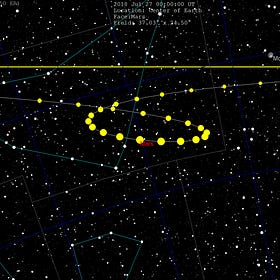

Nicely done!